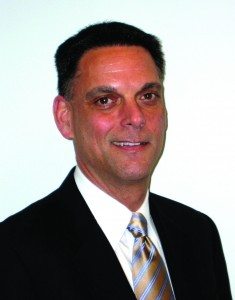While the idea of diversity in the workplace isn’t new, the insurance industry is known for lagging when it comes to change.
“Quite frankly, I’ve been involved in the industry for quite a number of years. In the last one, two, even three decades, many of our jobs and many of our cultures haven’t evolved so very much. They haven’t changed a great deal,” said Dave Coons, senior vice president at The Jacobson Group.
Attracting emerging talent means following in other industries’ footsteps by reshaping jobs and corporate cultures, he said.
“What we’re finding is that other industries are redesigning their jobs to appeal to 21st century talent,” said Coons. “They’re really taking into account what, for example, millennials are most drawn to. They try to adjust not only their jobs and the various different positions, but also their culture to appeal to them. I think we need to do that in the insurance industry as well.”
Diversity is a key strategy to promote innovation and improved performance.
“Diversity, by definition, just brings new, unique and different ideas to the table. It expands our view and provides a vantage point that non-diverse environments simply cannot,” Coons explained.
Based on polls and surveys taken by Jacobson, Coons said that about 85 percent of organizations report that they’ve already incorporated diversity staffing models into their business plans.
“As a result, they’re reporting that having a more diverse environment has increased their business performance,” said Coons. “That these diverse professionals bring new ideas and experiences to the table that they’ve not been exposed to in the past.”
Progressive has a program called Edison, an online community-based environment to gather ideas, share learning and solve specific business challenges, Hendrick explained. (See related article, “Where BIG Ideas Happen at Progressive: The Garage.”)
The company wanted to create a community of engaged innovation.
“We have companywide challenges that any employee can participate in. We had about 11,000 employees that were engaged with our last companywide Edison challenge. That’s 11,000 out of a company of over 28,000 which is a pretty good figure,” said Hendrick.
She explained that an employee’s engagement in the program could range from visiting the Edison website, proposing an idea, forming a team or even voting for a coworker’s idea.
Key Employee Attributes Needed
A wide variety of skills can be valuable to the insurance industry as a whole.
“There’s always those …who have the creative gene, who are imaginative and intuitive and can design new and different products and services that appeal to the market,” said Coons. “Separately, there are those who can implement those designs. Oftentimes, those two aren’t the same individual. There are those who are very specialized and those who are very well rounded.”In addition, Coons explained that as the industry faces increased disruption and other challenges, there’s always going to be certain skills and traits that are very appealing to the insurance industry.
“What I mean is of course technical expertise, creativity, innovative, out of the box thinkers, strategic planners and great communicators. These are things that are always going to be attractive to our industry,” said Coons.
Claims in Focus
In the claims area, the types of employees or qualifications now being considered for positions include a mix of old and new skills and attributes.

“Many of those that are going to retire in the next three to five years come from the claim sector,” said Coons. “We have to think about bringing bright, young, emerging talent into this field. While they may not bring experience to the table, if they had the right qualities, characteristics and traits of the successful claims professional, then I think there are going to be a lot of career opportunities for those people.”
Another valuable attribute is the ability to be a self-starter.
“Self-starters are key. We have central hubs, larger offices, where we have employees who are headquartered,” said Hendrick. “But then we have claims offices across the country. That ability to be able to be a self-starter in a location that’s not at our headquarters is really important. We also have a lot of people that work from home.”
Hendrick said that collaboration is an important attribute as well. “We have this culture that really celebrates diversity of thought and challenging the status quo. It’s expected, really. That collaboration piece is something we look for as an employee attribute.”
An interest in continuous learning is also important, said Hendrick, who indicated that employees at Progressive are encouraged to move between departments.
“They might come in as a repair rep …and move on to something else within the company. I’m an example of that. I started …working in public relations …and just recently came over into the recruiting organization,” Hendrick said. “We recruit internally quite a bit. That’s where we have hiring managers that are really connecting with their networks within the company to find out who might not have direct experience in a certain realm, but might have all the behavioral leadership attributes that they might be looking for.”
Critical thinking skills and an aptitude for claims are important qualifications, Coons said.
Those with needed skills may not have a four year degree.
“Many companies are reporting that individuals with high school degrees and additional certificates and licenses, and those with associate’s degrees are also very appealing,” said Coons.
Hendrick agreed. “From an educational requirement standpoint, it seems to be a little bit more fluid, a little less rigid, than in times past,” she said.
Customer service skills are equally important.
“I would also say our claims reps are just really at the forefront of working with our customers. They have to be decision makers, problem solvers. They have to be able to adapt to a world where we’re not just about car insurance, that we sell a variety of products,” said Hendrick.
He also recommended that insurers refrain from jumping to conclusions and assume that unskilled, emerging talent isn’t worth the investment due to the cost of training or the risk of turnover.
Coons offered examples of insurers thinking outside the box when it comes to talent recruitment.
“We talked about …leveraging their networks, their connections, their contacts. Many will do this through nontraditional recruiting methods such as social media, but in also very literal social settings,” said Coons. “I’ve seen a lot of new attempts to integrate their millennial employees, for example, in the recruiting process. Not just through their employee referral programs, but also incorporating them into their on and off campus recruitment efforts.”
Some insurers have set up formal employee ambassador programs in order to connect to a wider audience.
“It’s a very passive candidate talent pool. What we’re finding is it’s really more of a courtship than it is anything else. What I mean by that is that we’re in a position where we now have to engage candidates to consider opportunities,” Coons explained. “It’s a process. It’s one that doesn’t happen quickly just by sourcing a résumé, and calling an individual, and telling them about a position you’re trying to fill. It really is more so about creating a relationship and a dialog that will engage them in the conversation, and compel them to consider opportunities in our industry further.”





















 Breaking: Andersen to Replace Zaffino as CEO of AIG on June 1
Breaking: Andersen to Replace Zaffino as CEO of AIG on June 1  First Atlantic Hurricane Forecast for 2026 Suggests Season Close to 30-Year Norm
First Atlantic Hurricane Forecast for 2026 Suggests Season Close to 30-Year Norm  What to Expect in 2026: U.S. P/C Results More Like 2024
What to Expect in 2026: U.S. P/C Results More Like 2024  Several New Laws Impacting California Drivers Take Effect January 1
Several New Laws Impacting California Drivers Take Effect January 1 











